准备工作
elasticsearch-7.XX需要更高版本的java(11),而提高es的版本也需要提高filebeat的版本!我这里使用的是jdk8,所以下载的elasticsearch-5.6.0
下载地址:https://www.elastic.co/cn/downloads/elasticsearch地址
一、安装elasticearch
1. 下载完成elasticsearch之后时行解压缩;
Linux解压命令:
tar -zxvf 压缩文件名.tar.gz
2. 创建用户组和用户
由于elasticsearch启动不可以用root用户启用,所以这里需要创建用户和组,命令如下:
groupadd esgroup
useradd esuser -g esgroup -p espassword
3. 修改配置
设置 network.host: 0.0.0.0
http.port: 9200

4. 启动
切换用户并启动
su esuser
./bin/elasticsearch
su esuser
./bin/elasticsearch -d 启动在后台运行
5.启动过程中的问题
此部分引用:https://blog.csdn.net/cookzrk/article/details/80179006 解决方案:max file descriptors [4096] for elasticsearch process is too low, increase to at least [65536]
解决方案:max file descriptors [4096] for elasticsearch process is too low, increase to at least [65536]
切换到root用户
ulimit -Hn 查看硬限制
vim /etc/security/limits.conf
添加下面设置 hadoop是用户
esuser hard nofile 65536
esuser soft nofile 65536
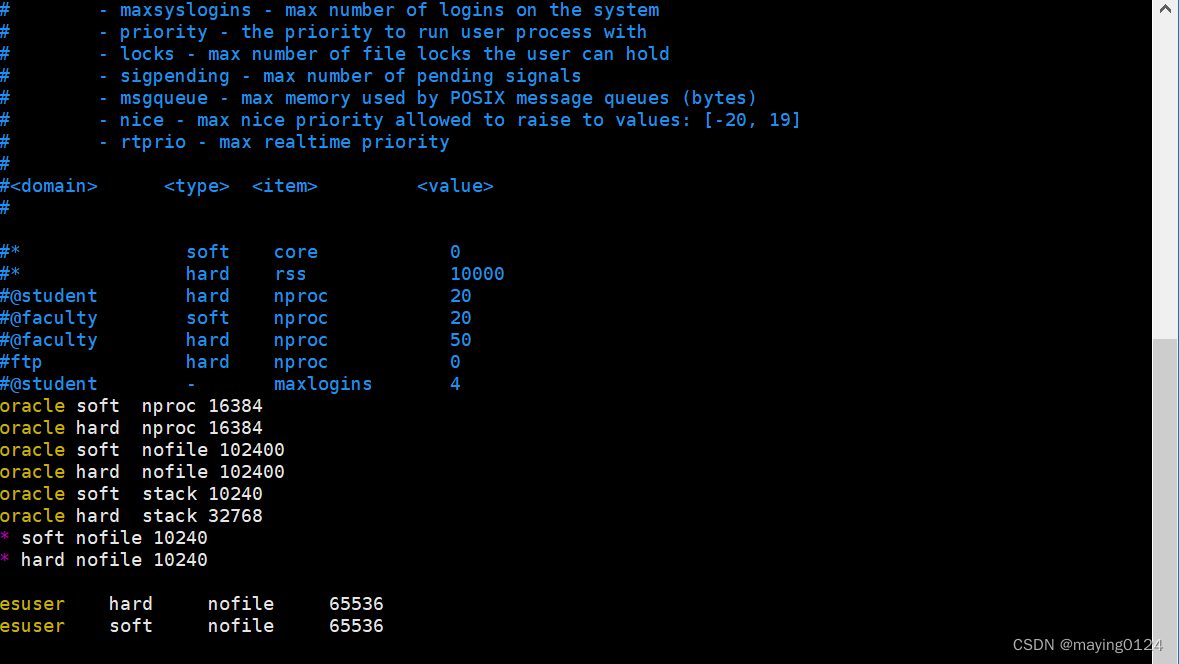
退出用户重新登录,使配置生效
重新 ulimit -Hn 查看硬限制 会发现数值有4096改成65535
vi /etc/sysctl.conf
添加下面配置:
vm.max_map_count=655360
并执行命令:
sysctl -p
6.启动成功后:
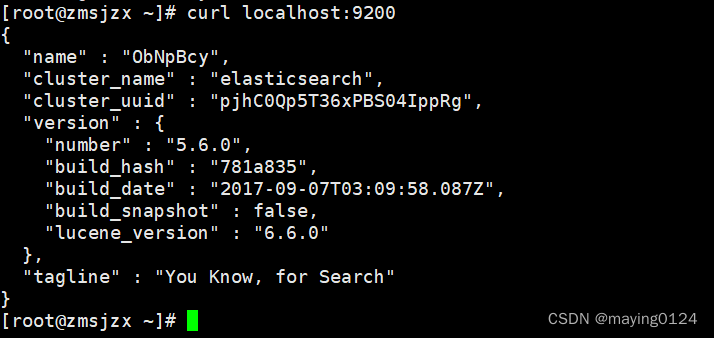
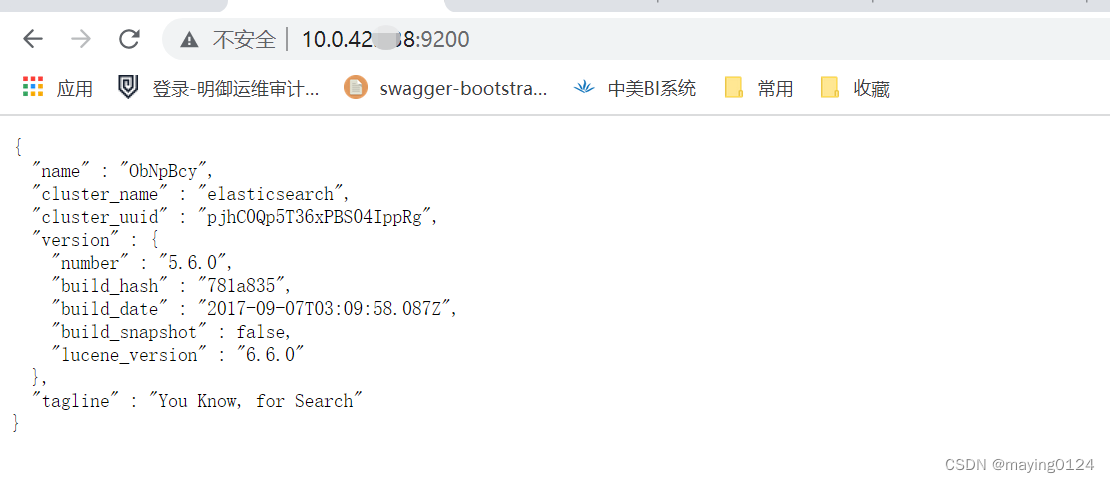
二、安装filebeat
1.下载对应的安装包,在要获取日志的服务器上解压
下载地址 filebeat下载地址
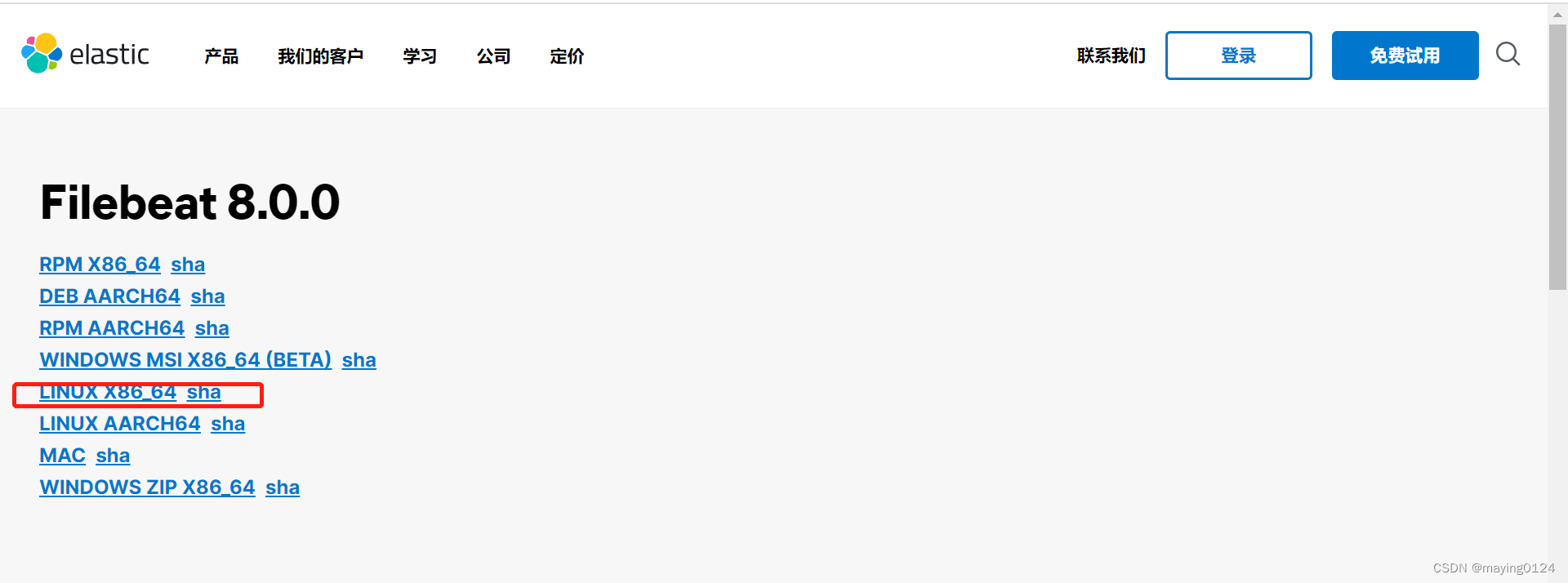
我这里统一用的filebeat-5.6.0-linux-x86_64.tar.gz
2.下载后完成解压
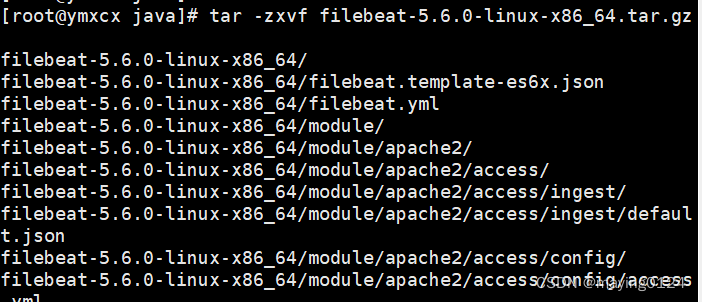
3.修改配置文件filebeat.yml

###################### Filebeat Configuration Example #########################
# This file is an example configuration file highlighting only the most common
# options. The filebeat.full.yml file from the same directory contains all the
# supported options with more comments. You can use it as a reference.
#
# You can find the full configuration reference here:
# https://www.elastic.co/guide/en/beats/filebeat/index.html
#=========================== Filebeat prospectors =============================
# 输入
fieldeat.inputs:
- type: log
enabled: true
paths:
- /usr/java/apache-tomcat-8.5.64/bin/logs/*.log
# 指定索引的分区数
setup.template.settings:
index.number_of_shards: 3
#指定kibana所在主机的ip和服务监听的端口
setup.kibana:
host: "10.0.42.238:5601"
filebeat.prospectors:
# Each - is a prospector. Most options can be set at the prospector level, so
# you can use different prospectors for various configurations.
# Below are the prospector specific configurations.
- input_type: log
# Paths that should be crawled and fetched. Glob based paths.
paths:
- /usr/java/apache-tomcat-8.5.64/bin/logs/*.log
#- c:\programdata\elasticsearch\logs\*
# Exclude lines. A list of regular expressions to match. It drops the lines that are
# matching any regular expression from the list.
#exclude_lines: ["^DBG"]
# Include lines. A list of regular expressions to match. It exports the lines that are
# matching any regular expression from the list.
#include_lines: ["^ERR", "^WARN"]
# Exclude files. A list of regular expressions to match. Filebeat drops the files that
# are matching any regular expression from the list. By default, no files are dropped.
#exclude_files: [".gz$"]
# Optional additional fields. These field can be freely picked
# to add additional information to the crawled log files for filtering
#fields:
# level: debug
# review: 1
### Multiline options
# Mutiline can be used for log messages spanning multiple lines. This is common
# for Java Stack Traces or C-Line Continuation
# The regexp Pattern that has to be matched. The example pattern matches all lines starting with [
#multiline.pattern: ^\[
# Defines if the pattern set under pattern should be negated or not. Default is false.
#multiline.negate: false
# Match can be set to "after" or "before". It is used to define if lines should be append to a pattern
# that was (not) matched before or after or as long as a pattern is not matched based on negate.
# Note: After is the equivalent to previous and before is the equivalent to to next in Logstash
#multiline.match: after
#================================ General =====================================
# The name of the shipper that publishes the network data. It can be used to group
# all the transactions sent by a single shipper in the web interface.
#name:
# The tags of the shipper are included in their own field with each
# transaction published.
#tags: ["service-X", "web-tier"]
# Optional fields that you can specify to add additional information to the
# output.
#fields:
# env: staging
#================================ Outputs =====================================
# Configure what outputs to use when sending the data collected by the beat.
# Multiple outputs may be used.
#-------------------------- Elasticsearch output ------------------------------
output.elasticsearch:
#enabled:true
# Array of hosts to connect to.
hosts: ["10.0.42.238:9200"]
# Optional protocol and basic auth credentials.
protocol: "http"
# username: "elastic"
# password: "changeme"
#index:"filebeatYM-%{+yyyy.MM.dd}"
#----------------------------- Logstash output --------------------------------
#output.logstash:
# The Logstash hosts
#hosts: ["localhost:5044"]
# Optional SSL. By default is off.
# List of root certificates for HTTPS server verifications
#ssl.certificate_authorities: ["/etc/pki/root/ca.pem"]
# Certificate for SSL client authentication
#ssl.certificate: "/etc/pki/client/cert.pem"
# Client Certificate Key
#ssl.key: "/etc/pki/client/cert.key"
#================================ Logging =====================================
# Sets log level. The default log level is info.
# Available log levels are: critical, error, warning, info, debug
#logging.level: debug
# At debug level, you can selectively enable logging only for some components.
# To enable all selectors use ["*"]. Examples of other selectors are "beat",
# "publish", "service".
#logging.selectors: ["*"]
4.启动filebeat
- 测试filebeat启动后,查看相关输出信息
./filebeat -e -c filebeat.yml -d "publish"
2.后台方式启动filebeat:
nohup ./filebeat -e -c filebeat.yml >/dev/null 2>&1 & 将所有标准输出及标准错误输出到/dev/null空设备,即没有任何输出
nohup ./filebeat -e -c filebeat.yml > filebeat.log &
启动成功后,会根据yml文件里配的elasticsearch 地址,向其输入日志文件:

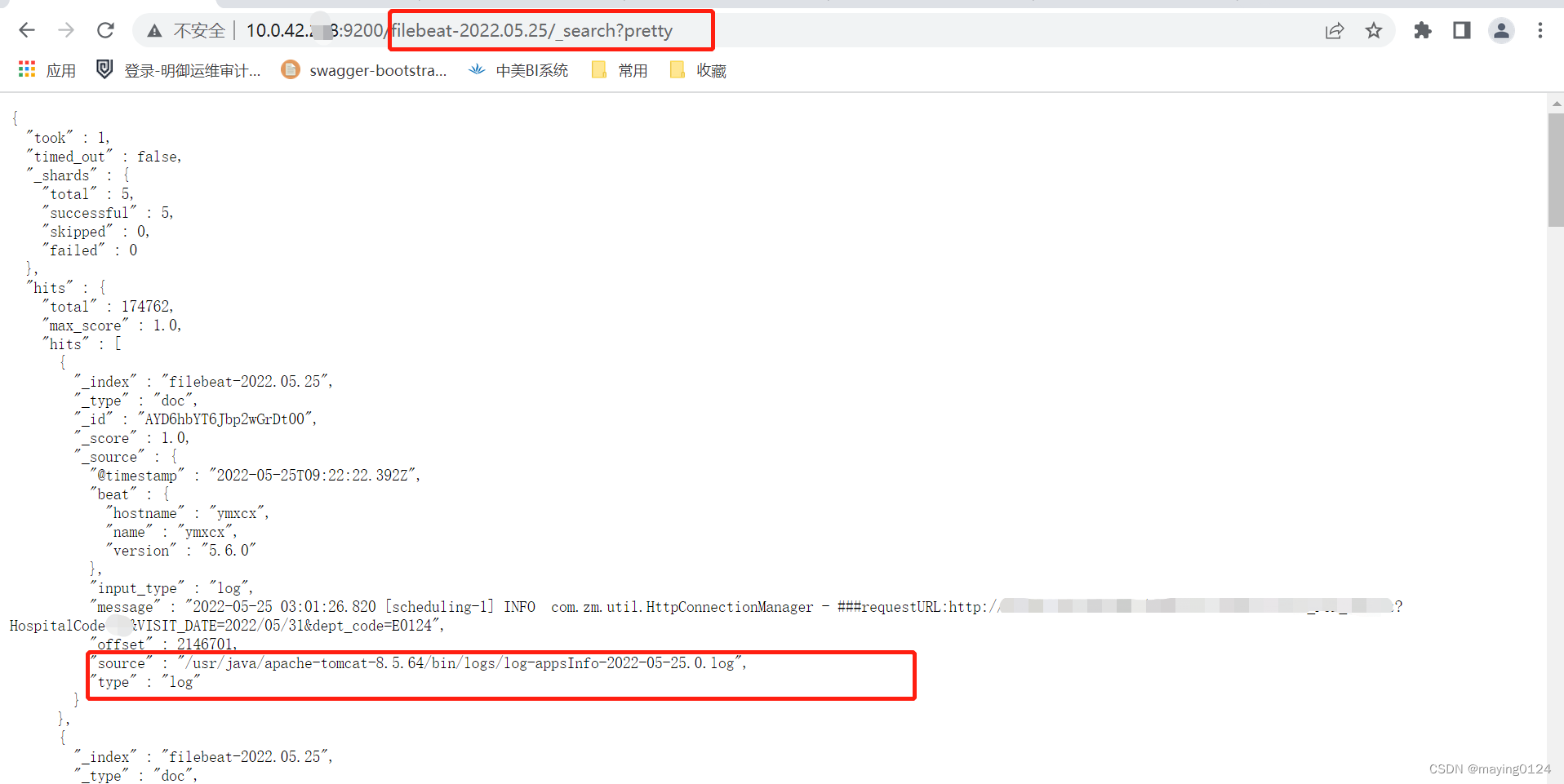
三、kibana安装部署
kibanan是elasticsearch的可视化平台
1.下载kibana安装包,我这里下载的kibana-5.6.0-linux-x86_64
下载地址:https://www.elastic.co/cn/downloads/past-releases/kibana-5-6-0下载连接
2.下载完成后进行解压
tar -zxvf kibana-5.6.0-linux-x86_64.tar.gz
3.修改配置文件
然后到kibana安装目录的config下,编辑kibana.yml配置文件,添加如下配置:
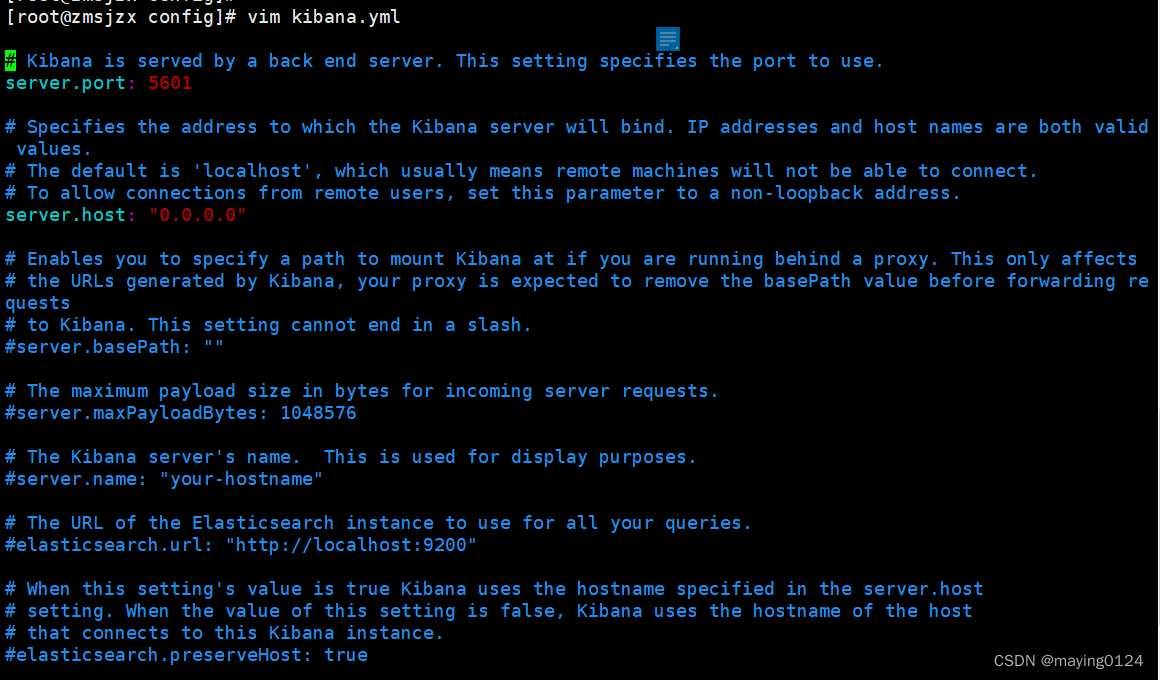
4.启动Kibana
cd /run/kibana-xxx-linux-x86_64/bin
./kibana &
主要使用&命令启动后,退出当前窗口时需要使用exit退出
成功启动后,可以访问:http:// ip: 5601来访问kibana,ip为kibana安装节点ip,端口默认为5601,可以在config/kibana.yml中配置
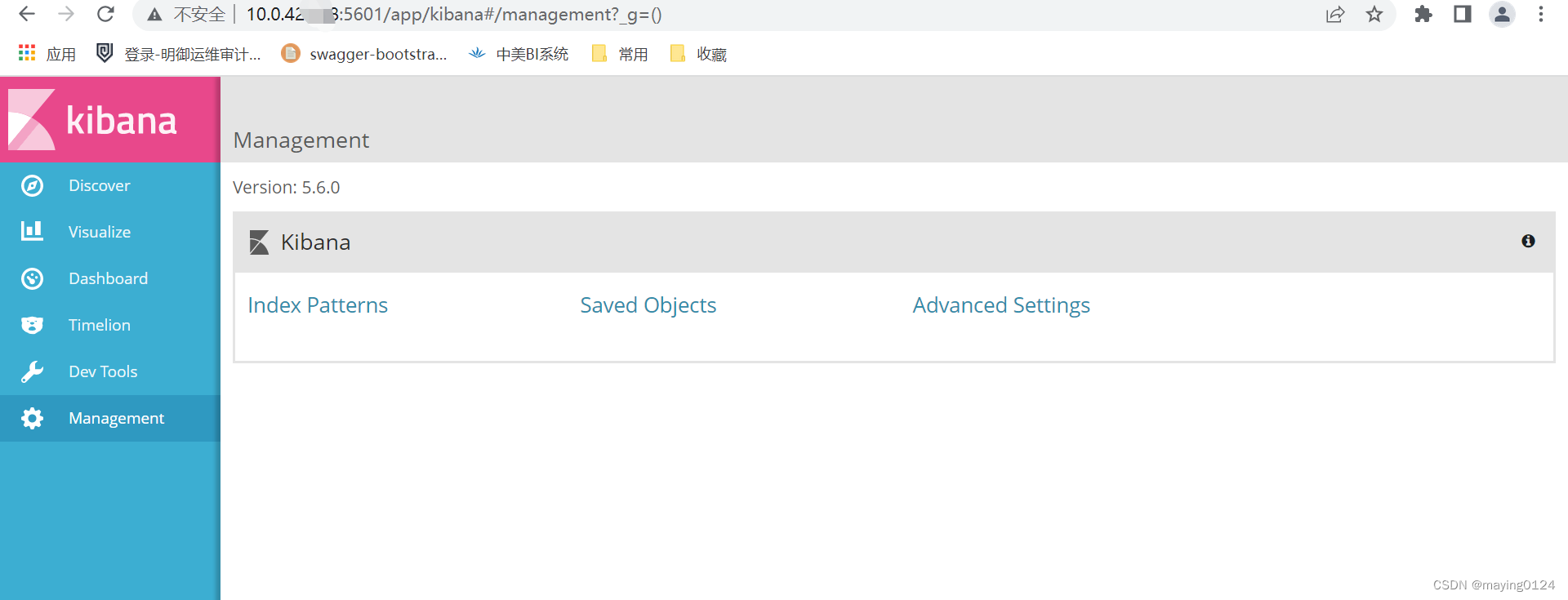
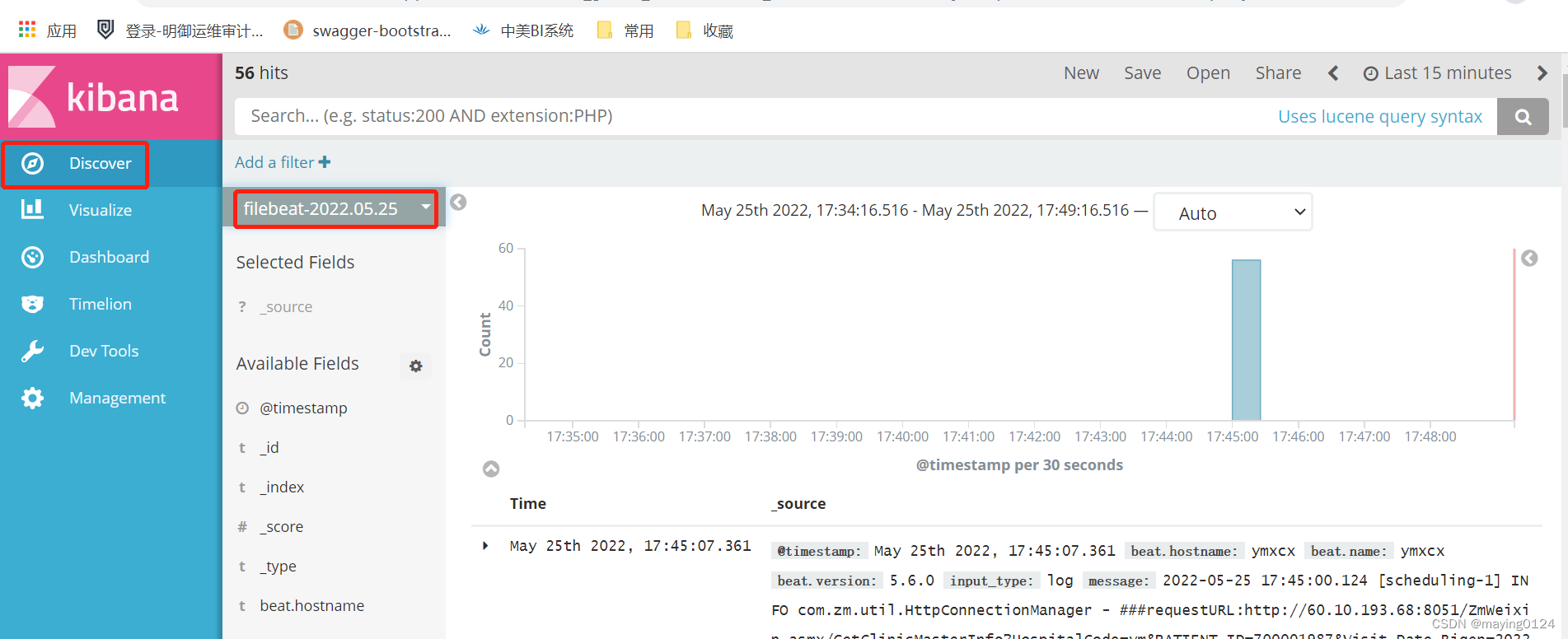
然后就可以查找自己的日志内容了!





















 829
829











 被折叠的 条评论
为什么被折叠?
被折叠的 条评论
为什么被折叠?








